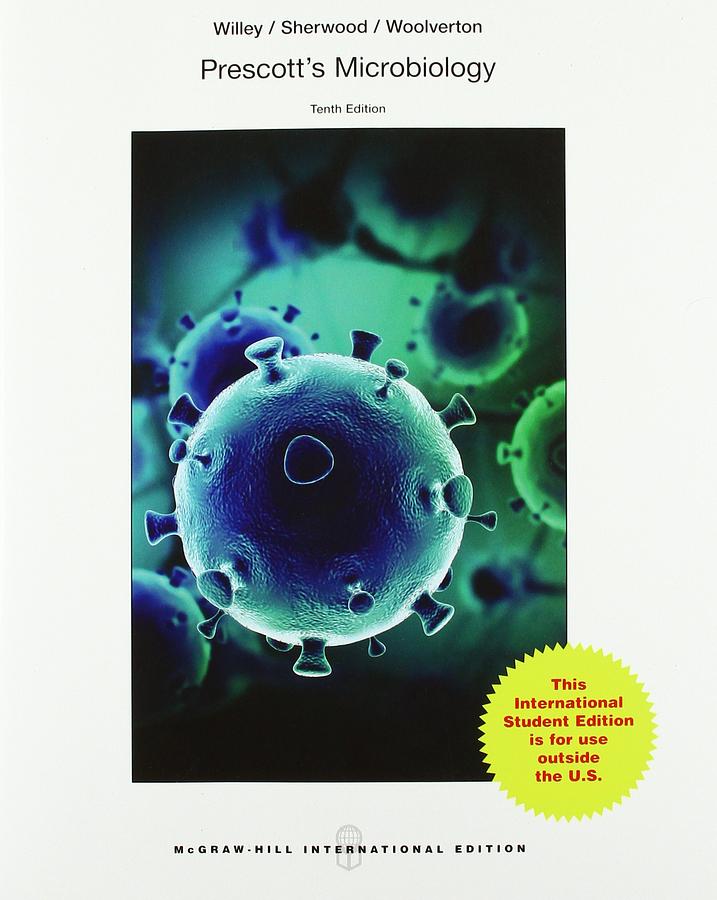內容簡介
內容簡介 Connect: A highly reliable, easy-to-use homework and learning management solution that embeds learning science and award-winning adaptive tools to improve student results. * Appropriate for microbiology majors and mixed majors courses. * Focused on readability, artwork, and the integration of several key themes (including evolution, ecology and diversity) throughout the text. * Evolution is used as an overarching theme throughout, uniting microbiological concepts and providing a framework upon which students can build their knowledge.
作者介紹
作者介紹 Joanne WilleyJohanne M. Willey is Full Professor at the Hofstra University in Long Island, New York.Linda SherwoodLinda M. Sherwood is a member of the Department of Microbiology at the Montana State University.Christopher J. WoolvertonChristopher J. Woolverton is Professor of Biological Sciences at Kent State University, Ohio.
產品目錄
產品目錄 Part One Introduction to Microbiology Chapter: 1. The Evolution of Microorganisms and Microbiology Chapter: 2. Microscopy and Specimen Preparation Chapter: 3. Bacterial Cell Structure Chapter: 4. Archaeal Cell Structure Chapter: 5. Eukaryotic Cell Structure Chapter: 6. Viruses and Other Acellular Infectious Agents Part Two Microbial Nutrition, Growth, and Control Chapter: 7. Microbial Growth Chapter: 8. Control of Microorganisms in the Environment Chapter: 9. Antimicrobial Chemotherapy Part Three Microbial Metabolism Chapter: 10. Introduction to Metabolism Chapter: 11. Catabolism: Energy Release and Conservation Chapter: 12. Anabolism: The Use of Energy in Biosynthesis Part Four Microbial Molecular Biology and Genetics Chapter: 13. Bacterial Genome Replication and Expression Chapter: 14. Regulation of Bacterial Cellular Processes Chapter: 15. Eukaryotic and Archaeal Genome Replication and Expression Chapter: 16. Mechanisms of Genetic Variation Chapter: 17. Recombinant DNA Technology Chapter: 18. Microbial Genomics Part Five The Diversity of the Microbial World Chapter: 19. Microbial Taxonomy and the Evolution of Diversity Chapter: 20. The Archaea Chapter: 21. The Deinococci, Mollicutes, and Nonproteobacterial Gram-Negative Bacteria Chapter: 22. The Proteobacteria Chapter: 23. Firmicutes: The Low G ∙ C Gram-Positive Bacteria Chapter: 24. A ctinobacteria: The High G ∙ C Gram-Positive Bacteria Chapter: 25. The Protists Chapter: 26. The Fungi (Eumycota) Chapter: 27. The Viruses Part Six Ecology and Symbiosis Chapter: 28. Biogeochemical Cycling and Global Climate Change Chapter: 29. Methods in Microbial Ecology Chapter: 30. Microorganisms in Marine and Freshwater Ecosystems Chapter: 31. Microorganisms in Terrestrial Ecosystems Chapter: 32. Microbial Interactions Part Seven Pathogenicity and Host Response Chapter: 33. Innate Host Resistance Chapter: 34. Adaptive Immunity Chapter: 35. Pathogenicity and Infection Part Eight Microbial Diseases, Detection, and Their Control Chapter: 36. Clinical Microbiology and Immunology Chapter: 37. Epidemiology and Public Health Microbiology Chapter: 38. Human Diseases Caused by Viruses and Prions Chapter: 39. Human Diseases Caused by Bacteria Chapter: 40. Human Diseases Caused by Fungi and Protists Part Nine Applied Microbiology Chapter: 41. Microbiology of Food Chapter: 42. Biotechnology and Industrial Microbiology Chapter: 43. Applied Environmental Microbiology
